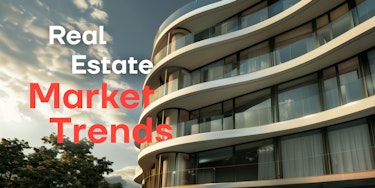Staying ahead of market trends is crucial for architects and industry enthusiasts. The real estate market is influenced by numerous factors, from economic conditions and population demographics to governmental policies and technological advancements. Recently, several notable trends have emerged, reshaping the local markets and influencing decisions across the board.
1. Urbanization and Mixed-Use Developments
Urbanization is at an all-time high, with projections indicating that 68% of the world's population will live in urban areas by 2050. This shift is driving a growing demand for mixed-use developments that blend residential, commercial, and recreational spaces. These developments cater to modern urban dwellers' lifestyle preferences, who seek convenience and accessibility. Architects now face the challenge of designing multifunctional spaces that seamlessly integrate living, working, and leisure activities.
An intriguing example is the Hudson Yards development in New York City, which is the largest private real estate development in U.S. history. This mixed-use megaproject includes residential towers, office buildings, a luxury mall, a cultural center, and public green spaces. The success of such projects underscores the importance of comprehensive design and planning in creating vibrant urban environments.
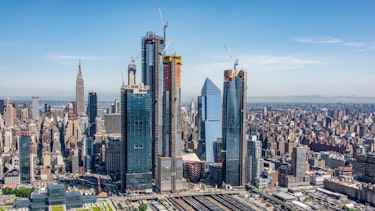
Credit: Architectural Digest
2. Technology Integration
Smart homes and buildings equipped with advanced technologies are becoming the norm. The global smart home market is expected to reach $135.3 billion by 2025, highlighting the growing demand for automated systems, IoT devices, and enhanced security measures. These technological integrations require detailed planning and design, which can be effectively demonstrated through high-quality VR services.
One fascinating development is the advent of digital twins — virtual replicas of physical buildings. These digital twins are used for monitoring and managing building systems in real-time, predicting maintenance needs, and improving overall efficiency. For instance, the city of Singapore has developed a digital twin of its entire urban area to improve city planning and infrastructure management.

Credit: Augmate
3. Shifting Demographics
Millennials and Gen Z are significantly influencing the market. They prioritize experiences, community living, and flexible workspaces. Co-living and co-working spaces are increasingly popular, offering communal environments that cater to their lifestyle preferences. Interestingly, 88% of millennials prefer urban living, yet many are also drawn to the flexibility of suburban lifestyles due to remote work opportunities.
The rise of co-living spaces such as The Collective in London, which offers residents fully furnished rooms, communal kitchens, and a variety of social spaces and events, highlights this trend. These spaces provide a sense of community and convenience, appealing to younger generations who value both social interaction and flexibility.
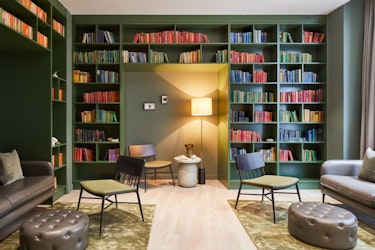
Credit: The Collective
4. Remote Work and Suburban Growth
The rise of remote work has shifted demand towards suburban areas, as people seek larger living spaces and a better quality of life away from crowded urban centers. This trend has led to a surge in suburban developments, focusing on spacious homes and community amenities. Surprisingly, suburbs have become tech hubs, with an increasing number of tech companies relocating to suburban areas to attract talent seeking a balanced lifestyle.
For example, companies like Google and Apple are expanding their presence in suburban areas, with massive campuses designed to offer a blend of work and leisure spaces. These campuses often include amenities such as fitness centers, parks, and retail spaces, making them attractive to employees looking for a holistic work-life experience.
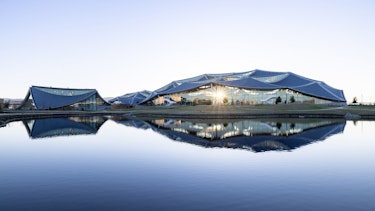
Credit: Dezeen
5. Sustainability and Green Buildings:
Sustainability is now a mainstream demand. According to the World Green Building Council, green buildings can reduce energy consumption by up to 30% and water usage by 20%. This trend is driven by regulatory pressures and increasing consumer awareness of environmental issues.
The Bullitt Center in Seattle, known as the greenest commercial building in the world, exemplifies this trend. It features a rooftop solar array, rainwater harvesting, and composting toilets, all of which are designed to minimize its environmental footprint.
Also our partners, Melbourne-based architecture firm Kennon, have announced the construction of Australia's first building with a solar-powered façade. The eight-story office building will be equipped with 1,182 solar panels that will produce more energy than it consumes.
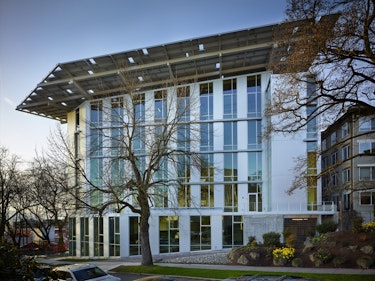
Credit: ArchDaily
The real estate market is continuously evolving, influenced by various trends that shape how we design, build, and live. Understanding these trends is crucial for making informed decisions, whether you’re an architect, investor, or an enthusiast. Whether you're designing a new urban oasis, a sustainable residential community, or a tech-savvy commercial space, CUUB studio is your partner in content creation and realizing the future of real estate.
